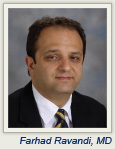 The outcome of treatment of older adults with acute myeloid leukemia (AML) remains unsatisfactory, although certainly not a totally futile exercise. Patients satisfying the entry criteria for cooperative group clinical trials can be expected to have complete remission rates of 50% to 55%, with remission durations of about 9 months, albeit with long-term survival rates of only about 10%. We have seen relatively little overall improvement in outcome for this population in recent decades. Nonetheless, these patients experience considerable benefit with complete remission, not the least of which is being at home for months with safe blood counts permitting normal activities.
The outcome of treatment of older adults with acute myeloid leukemia (AML) remains unsatisfactory, although certainly not a totally futile exercise. Patients satisfying the entry criteria for cooperative group clinical trials can be expected to have complete remission rates of 50% to 55%, with remission durations of about 9 months, albeit with long-term survival rates of only about 10%. We have seen relatively little overall improvement in outcome for this population in recent decades. Nonetheless, these patients experience considerable benefit with complete remission, not the least of which is being at home for months with safe blood counts permitting normal activities.
Even so, many oncologists, including those who readily treat patients with advanced solid tumors and compromised performance status, are reluctant to offer potentially remission-inducing chemotherapy to older patients with AML. One consideration of course, is the need for 3 to 4 weeks of hospitalization with the possibility that the patient may not survive or ever leave the hospital. However, advances in supportive care—most notably the development of highly effective antiemetics and replacement of the debilitating and nephrotoxic amphotericin B with the more tolerable imidazoles—have permitted safer delivery of myelosuppressive chemotherapy, and the expected 30-day mortality is now approximately 10%.1
Inadequacy of Age Cutoffs
The traditional breakpoint between younger and older (sometimes pejoratively termed “elderly”) patients,2 has been between 55 and 60 years of age, probably deriving from historical cutoffs for the application of allogeneic transplantation. Although it is true that the frequency of poor prognostic factors (such as higher-risk cytogenetics, overexpression of multidrug resistance proteins, and AML evolving from prior myelodysplasia) increases in older individuals, it is silly to assume that there are dichotomous differences in leukemia biology according to discrete boundaries in patient age.
 In addition, age alone is not a reliable surrogate for the ability to tolerate induction chemotherapy, and it is likely that subjective assessments of “performance” can be enhanced by the use of recently developed comorbidity indices. Thus, for patients with adequate baseline medical status and organ function, almost irrespective of age, the first instinct should be to consider standard induction therapy or a well-conceived clinical trial (remembering that many clinical “trials” do not address important questions or are not necessarily well conceived). Standard induction therapy should always be considered in the occasional older patient with “favorable” karyotypes (core binding factor AML, t(8;21) or abn16q22) or nucleophosmin1 (NPM1) mutations).3
In addition, age alone is not a reliable surrogate for the ability to tolerate induction chemotherapy, and it is likely that subjective assessments of “performance” can be enhanced by the use of recently developed comorbidity indices. Thus, for patients with adequate baseline medical status and organ function, almost irrespective of age, the first instinct should be to consider standard induction therapy or a well-conceived clinical trial (remembering that many clinical “trials” do not address important questions or are not necessarily well conceived). Standard induction therapy should always be considered in the occasional older patient with “favorable” karyotypes (core binding factor AML, t(8;21) or abn16q22) or nucleophosmin1 (NPM1) mutations).3
The real dilemma concerns patients who are truly “elderly,” regardless of their exact age, as evidenced by the presence of serious medical and/or cognitive comorbidities. Supportive approaches with transfusion and hydroxyurea are suitable for some of these patients. Many other older patients, however, who are otherwise reasonably well and functional, could benefit from therapies with the more modest aim of improvement in blood counts. The hypomethylating agents—azacitidine (Vidaza), decitabine (Dacogen), and, particularly in Europe,4,5 low-dose cytarabine—are now used frequently in the outpatient setting. These agents produce very low rates of complete remission and variable rates of “hematologic improvement,” albeit with the potential for significant cytopenias and hospitalization as well as the need for multiple courses of therapy.5-8 No randomized trials have compared these putatively “gentler” approaches with standard anthracycline/cytarabine induction therapy.
Different AML Types
When considering treatment in this population, it should be noted that AML in older patients can present in a couple of different “flavors”:
“proliferative” AML with hypercellular marrows and rising levels of peripheral blasts
“MDSy” AML (with or without a prior diagnosis of myelodysplastic syndrome) with more than 20% to 30% blasts but with slowly progressive cytopenias
The former requires an almost immediate decision about the suitability of intensive induction therapy, while many of the latter patients may not require any treatment, other than perhaps red blood cell transfusion, for long periods of time. It is likely that patients with more slowly proliferative disease are overrepresented in the trials using hypomethylating agents and low-dose cytarabine, and one should be cautious in extrapolating even these modest outcomes to the more general population of older patients with AML.5-7
Limits of Benefit
The treatment of less fit older patients has become an active area of clinical research. Portrayed as an “unmet medical need” and a potentially easy target because of the historically poor results, multiple pharmaceutical companies have designed small, sometimes phase II trials in an attempt to get new drugs approved without directly challenging the standard of anthracycline and cytarabine in a phase III trial with survival as an endpoint. In addition to problems in defining a population of patients who cannot tolerate induction chemotherapy, it has been difficult to prove that the side effects of such treatment are less than what would be expected with “7+3” chemotherapy. This was the major problem, as identified in an FDA review, with a phase II study of clofarabine (Clolar), a drug with considerable single-agent activity, but with durations of marrow aplasia similar to what occurs after standard induction chemotherapy.8
Conclusion
It seems likely that the limits of the benefit from chemotherapy have been defined, given the multiple mechanisms of resistance inherent in the stem cell origin of this group of leukemias. Real progress will be difficult but may depend on novel immunologic approaches and hopefully better understanding of stem cell biology. Until better science prevails, this complex decision in older patients is a reminder that there is still an “art” to medicine and that consultations with experienced leukemia centers are often advisable. ■
Disclosure: Dr. Schiffer has served as a consultant for Genzyme, Celgene, Ambit, and Ariad. He has received research grants from Ambit, Ariad, and Celgene.
References
1. Lowenberg B, Ossenkoppele GJ, van Putten W, et al: High-dose daunorubicin in older patients with acute myeloid leukemia. N Engl J Med 361:1235-1248, 2009.
2. Schiffer CA: “I am older, not elderly,” said the patient with acute myeloid leukemia. J Clin Oncol 28:521-523, 2010.
3. Becker H, Marcucci G, Maharry K, et al: Favorable prognostic impact of NPM1 mutations in older patients with cytogenetically normal de novo acute myeloid leukemia and associated gene- and microRNA-expression signatures: A Cancer and Leukemia Group B study. J Clin Oncol 28:596-604, 2010.
4. Burnett AK, Milligan D, Prentice AG, et al: A comparison of low-dose cytarabine and hydroxyurea with or without all-trans retinoic acid for acute myeloid leukemia and high-risk myelodysplastic syndrome in patients not considered fit for intensive treatment. Cancer 109:1114-1124, 2007.
5. Fenaux P, Mufti GJ, Hellstrom-Lindberg E, et al: Efficacy of azacitidine compared with that of conventional care regimens in the treatment of higher-risk myelodysplastic syndromes: A randomised, open-label, phase III study. Lancet Oncol 10:223-232, 2009.
6. Blum W, Garzon R, Klisovic RB, et al: Clinical response and miR-29b predictive significance in older AML patients treated with a 10-day schedule of decitabine. Proc Natl Acad Sci U S A 107:7473-7478, 2010.
7. Cashen AF, Schiller GJ, O’Donnell MR, et al: Multicenter, phase II study of decitabine for the first-line treatment of older patients with acute myeloid leukemia. J Clin Oncol 28:556-561, 2009.
8. Kantarjian HM, Erba HP, Claxton D, et al: Phase II study of clofarabine monotherapy in previously untreated older adults with acute myeloid leukemia and unfavorable prognostic factors. J Clin Oncol 28:549-555, 2010.
Dr. Schiffer is Professor of Oncology and Medicine, Head of the Multidisciplinary Leukemia/Lymphoma Team, Division of Hematology/Oncology, Department of Oncology, Karmanos Cancer Institute, Wayne State University School of Medicine, Detroit.


